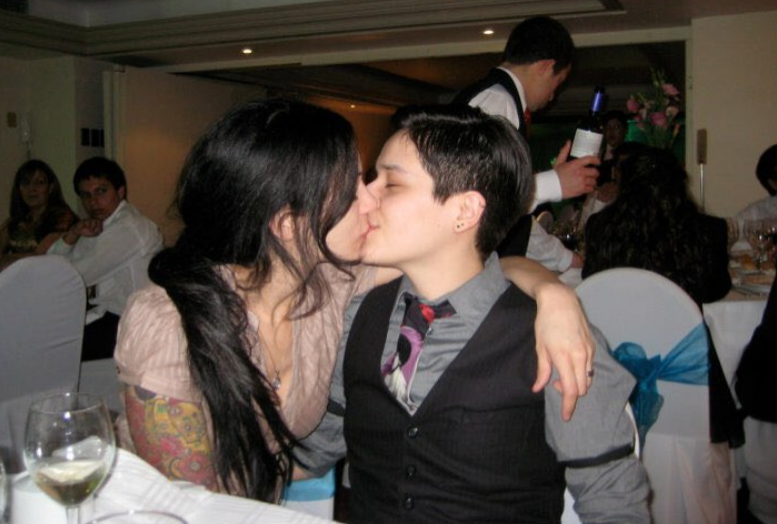Mathilde “Missy” de Morny was a ‘butch’ lesbian artist and French noblewoman, who dared to challenge sexist ‘norms.’ She was briefly married to a gay man, Jacques Godart—A common cover used by gay people, even today, who often face dangerous levels of oppression. Missy de Morny was attacked, not only for being a lesbian, but for refusing to bow down to compulsory ‘femininity,’ which was legally enforced in France at the time.
So, why are revisionists rewriting Missy de Morny’s history, and redefining her, on the basis of the same sexist ‘norms’ that she spent much of her adult life fighting against? Why are lesbians, who survived persecution and fought against lesphobia, being compulsively rewritten as “men”?
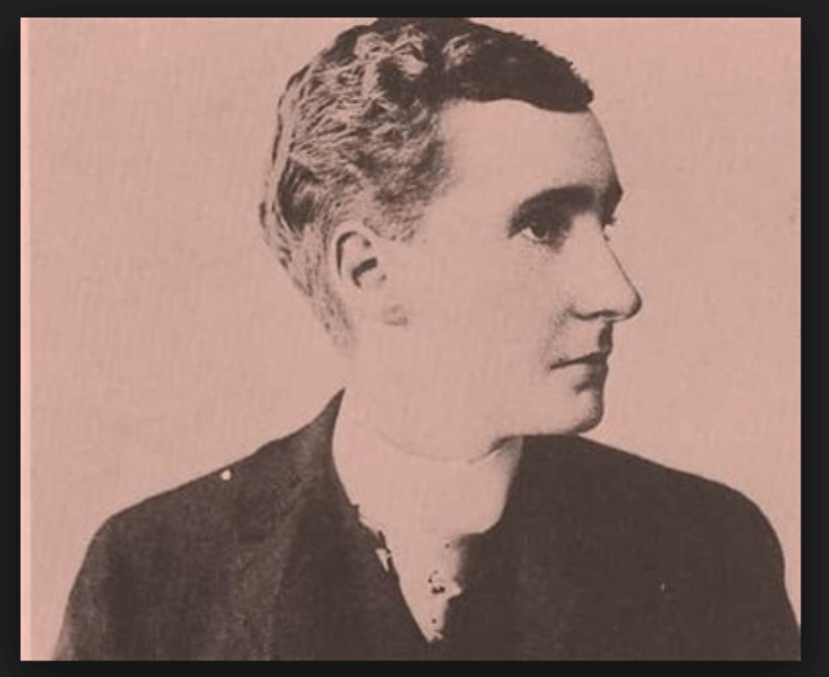
Recently, my wife and I tried to watch the movie Colette. Well into the movie, I was excited to see a ‘butch’ lesbian character appear on the screen. Especially since it’s 2019, and there’s still only EVER been ONE butch lesbian actress (butch IRL) cast in a major role, on a mainstream TV show—As a punchline (of course). So, up pops this character, Missy de Morny, in the movie Colette, and I’m almost immediately made to feel naive for even thinking such a thing could be really happening. Mathilde “Missy” de Morny, a butch lesbian, a real-life historical figure, was suddenly reframed as a “man.”
The gay men who wrote the script, Wash Westmoreland and his husband Richard Glatzer, rewrote actual lesbian history… our history… rebranding yet another historical figure, postmortem.
The mainstream has gone straight from a long his-tory of not allowing butch lesbians to play any roles, unless they’re willing to play the ‘she’s really a man’ punchline, to (now) only allowing butch characters to appear on screen, if the role affirms that they ‘really are men’. And in these new roles, the characters aren’t punchlines… So, what message does that send to young butch lesbians? Be a punchline or admit that you’re really a “man”?
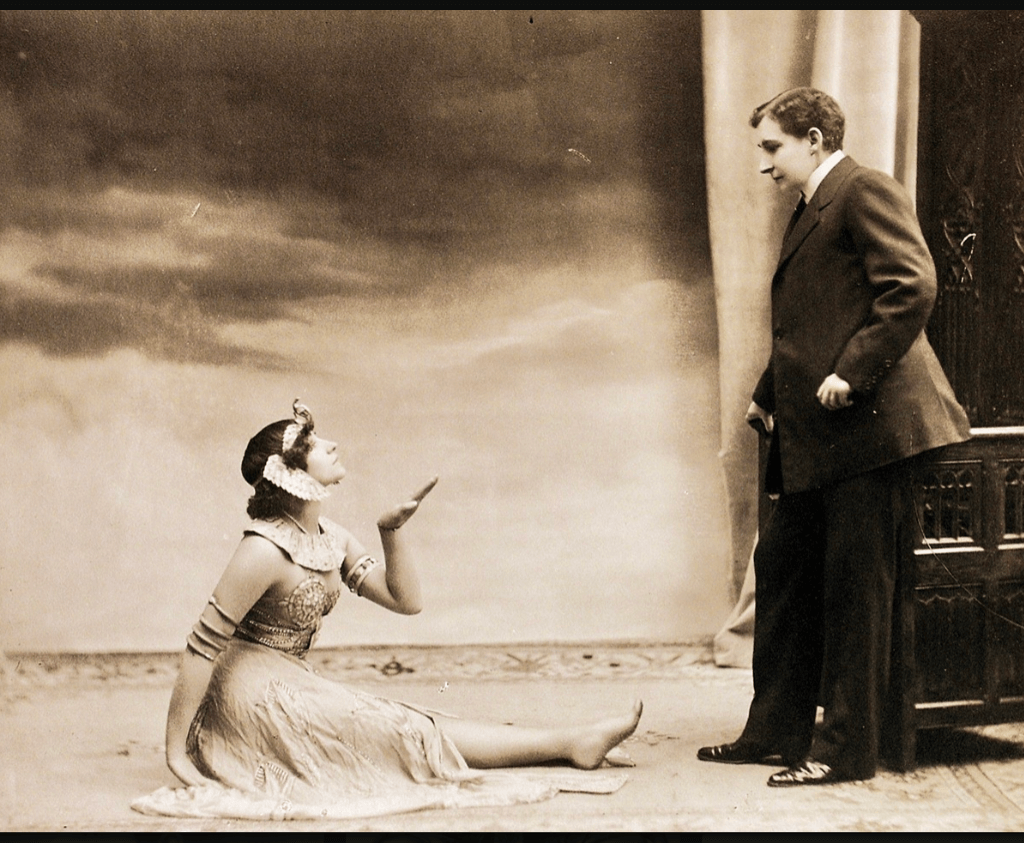
So the butch lesbian characters that we’ve waited for—for ages—to be treated with any depth and dignity, got skipped right over. As the old saying goes, “life imitates art.” Young lesbians who don’t ‘conform,’ absorb all of this. This new trend, which skipped over butch lesbian depictions altogether, creates even more internalized sexism, homophobia and self-hatred in young lesbians. And anyone who doesn’t see the connection, is part of the problem.
If director Wash Westmoreland thinks its okay to erase our history, lesbian history, and rewrite us as “men,” then surely he won’t mind if my wife and I make movie about him and his husband, and rewrite their lives, postmortem, expunging one of them from the category of “man.” But somehow, I think he would mind.
Missy de Morny grew up amid the Spanish royal court, where she encountered La Fragosa. When she met La Fragosa, one of the few toreras (female bullfighters) of the era, someone who eschewed skirts for the traje de luces (light suit), Missy was enamored. She told Missy de Morny, “Whatever a man can do, a woman can do too.” Those words stuck with Missy and shaped the woman she would become. Her brave and stylish look evolved over many years.
“Whatever a man can do, a woman can do too.” That’s the powerful message Missy de Morny lived to prove by example… The message Glatzer and Westmoreland chose to deny thousands of lesbian viewers, when they decided to revise our history.
Contrary to the depiction Westmoreland and Glatzer chose to put out, Missy de Morny was proud of being female and fighting the ‘norms.’ In fact, she was so into the promotion of female empowerment that once, dressed in ‘men’s attire,’ Missy dueled a prominent playboy, and upon winning she ripped open her shirt and exposed her breasts. “Whatever a man can do, a woman can do too.” That is the powerful message Missy de Morny lived to prove by example… The message Glatzer and Westmoreland chose to deny thousands of lesbian viewers, when they decided to revise our history.
The mainstream media has eagerly rewritten Missy as “transgender” on the basis of a single claim, that she had her ovaries and breast tissue removed—A claim made by someone who wasn’t intimate with Missy at all. One of the most well-respected scholars on Missy de Morny, Dr. Kadji Amin, explains why there’s no basis for this attempt at reinvention: “Recent historians have claimed de Morny as a transsexual, based on a single, unverified, and never-duplicated claim by Simone Wiel, who, moreover, was not one of de Morny’s intimates.” Dr. Kadji goes on to say it’s not likely that “someone as notorious and subject to gossip,” such as Missy, “could have had her ovaries and breast tissue surgically removed, as Wiel claims, without anyone else having taken note.”
Apparently, this misogynistic rumor is not only alive and well, it’s been used to push a lie, to reinvent a butch lesbian, postmortem. So a woman, who was so proud of proving that a woman was capable of doing anything a man could do, a woman so intent on showcasing female empowerment that she would bare her breasts in public to prove that point, a woman who was brave enough to defy sexist ‘norms’ at a time where compulsory femininity was legally enforced, has now, so many years after her death, been revised to be a “man.”
Missy de Morny would exercise nude in front of a select female audience, on gym equipment that was installed in her home. Much of what she did in her life, embraced femaleness—She simply gave us a new lens through which we could view womanhood. A new lens that pushed against sex-based oppression.
Female empowerment is quite often at it’s most powerful, when packaged in a suit—A suit only intended to be worn by those hoarding all the power.
Missy’s rise in society, coincided with her marriage in 1881, to Jacques Godart, the Marquis de Belbeuf. The increasing boldness of the press at the time, made her a much-imitated figure in Paris. After her mother passed away, in 1896, Missy cut her hair and ordered suits from Savile Row. Female empowerment is quite often at it’s most powerful, when packaged in a suit—A suit only intended to be worn by those hoarding all the power.
Mathilde de Morny was romantically involved with several women in France, including dancer and courtesan, Liane de Pougy, and more famously, married bisexual writer, Sidonie-Gabrielle Collette (known simply as Colette). From the summer of 1906 on, Missy lived with Colette in the ‘Belle Plage’ villa, where Colette often wrote.
While playing an Egyptologist, during a simulated lesbian love scene, the two women kissed and it almost caused a riot. The production was put to a stop. This created a major scandal, and Missy de Morny withdrew from society. After that, they couldn’t live together openly, but the relationship lasted until 1912.
Missy and Colette formed one of the most alarming butch/femme couples in history (both on and off the stage). In 1907, Missy and Colette put on a pantomime, Rêve d’Égypte (‘Dream of Egypt’), at the Moulin Rouge. While playing an Egyptologist, during a simulated lesbian love scene, the two women kissed and it almost caused a riot. The production was put to a stop. This created a major scandal, and Missy de Morny withdrew from society. After that, they couldn’t live together openly, but the relationship lasted until 1912.
On June 21, 1910, the couple tried to purchase the manor of Rozven at Saint-Coulomb, but the owner, Baron du Crest, refused the sale, because Missy wasn’t dressed in ‘feminine’ attire. Colette ended up signing the deed instead. On the same day, Colette officially divorced her husband, Henry “Willy” Gauthier-Villars. Willy was 15 years older than Colette, a womanizer who took credit for writing Colette’s very popular novel series.
In the 1920s, Missy moved into a Seine-side apartment and withdrew from society, further still. In the 20’s and 30’s, butch/femme lesbian couples would gather at clubs, come nightfall… especially in Montmartre, Paris. Lesbian bars, such as Le Monocle in France, were home to lesbian couples until the 1940s, when the German occupation of WWII forced the club to close.
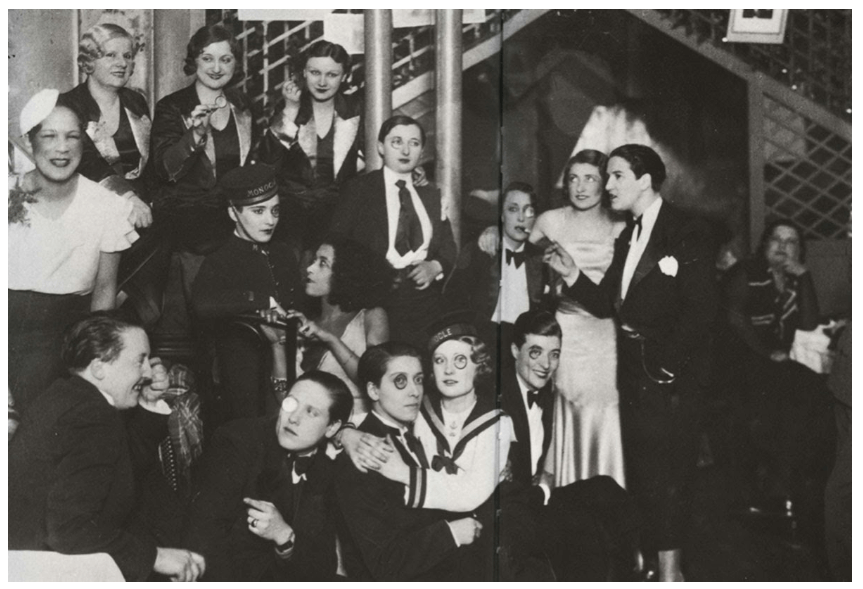
So, are all the lesbians at Le Monocle up for a postmortem revision as well? Where is the line drawn exactly? Where does it end? “Femmes,” like Carson McCullers are being revised postmortem. If we’re going on the basis of sexist stereotypes, every lesbian I know could be recategorized after death… Not least of all myself.
In an interview with Diva, director Westmoreland comments that “[Colette’s] work is being stolen and she’s struggling to get out from under a giant male ego.” It’s such an incredibly ironic statement, seeing as how our stories are being stolen, erased and revised, as lesbians are struggling to get out from under the giant male ego.
Perpetuating this sexist distortion, this ruthless revision of lesbian history, this theft of our stories, demonstrates the ongoing cruelty lesbians have faced, as well as a complete lack of integrity on the part of the revisionist mainstream. The revision of lesbian lives, only serves to cause more harm to a community that’s been mangled within an inch of its life. Lesbians are statistically the most underfunded, unrepresented and aggressively censored group within the alphabet soup.
Lesbians have endured this mainstream psychological warfare for years, but this, this is a whole new level of media warfare on lesbians. The constant attempts to revise us, in recent years, to rewrite our history, is astounding.
An article in Into (among so many others), relabels de Morny as “transgender,” saying she “dressed as a man, lived as a man, and referred to himself with the name Max.” Further asserting, “I will continue to refer to de Morny with male pronouns for the purpose of this article, based on the fact that he lived as a man.”
Calling Missy “Max” and he/him, throughout an entire article feels almost obsessive—Like pissing all over a piece of territory you’re trying to claim.
Mathilde de Morny did have some nicknames, including her pseudonym as an artist, “Yssim” (an anagram of Missy) and “Max,” but she didn’t go by he/him, as incorrectly portrayed in the movie (and all across “LGBTQ” mainstream media)… Even Westmoreland admits this in an interview. Calling Missy “Max” and he/him, throughout an entire article feels almost obsessive—Like pissing all over a piece of territory you’re trying to claim.
In my childhood, I was called Jay. In High School, I was called little Joe. Siri calls me Big Daddy and my nickname is Romeo. A rejection of compulsory ‘femininity,’ even before we fully understand what it is we’re rebelling against, has forever been part of lesbian culture. A common coming-of-age lesbian experience, as we grapple with sexist ‘norms,’ limitations and expectations, as well as same-sex attraction.
That idea that ‘womanhood’ is synonymous with ‘femininity’—a particular set of clothes, haircuts, names, and interests—is not only regressive and extremely misogynistic, it perpetuates the cycle of abuse mainstream media has inflicted upon young lesbians for decades.
The message mainstream media has sent us, for so long, is that they find butch lesbians so disgusting, so troubling, so ‘incorrectly female,’ that they shouldn’t be seen on TV, unless playing the “she’s really a man” punchline. And now, the message has morphed, so that those who are ‘incorrectly female’ can only be cast if the role portrayed (with appeal and dignity) indicates they really are “men.”
And it’s not just straight mainstream media at play—The male-dominated “LGBTQ” and it’s media, have consistently sanctioned and contributed to the dehumanization, humiliation, and shaming of ‘butch’ lesbians as well. Only now, it’s more dangerous to young lesbians than ever before.
Butch lesbians are so disruptive to fragile masculinity, that this idea—that butch lesbians are incorrectly female—has been craftily hammered and cemented into the minds of so many men and women alike.
Billboards to magazines, TV shows to big screens… we’re taught, from birth, that female is synonymous with ‘feminine.’ We live in a fantasy-land world, where all girls are born innately drawn to things deemed ‘feminine.’ We’re taught ‘feminine,’ means ‘submissive.’ If we don’t comply, we’re corrected, even as babies… And if we don’t correct it, we’re quickly made to understand that we’re ‘incorrectly female.’ And if we’re not ‘feminine,’ call the specialist, something must be wrong.
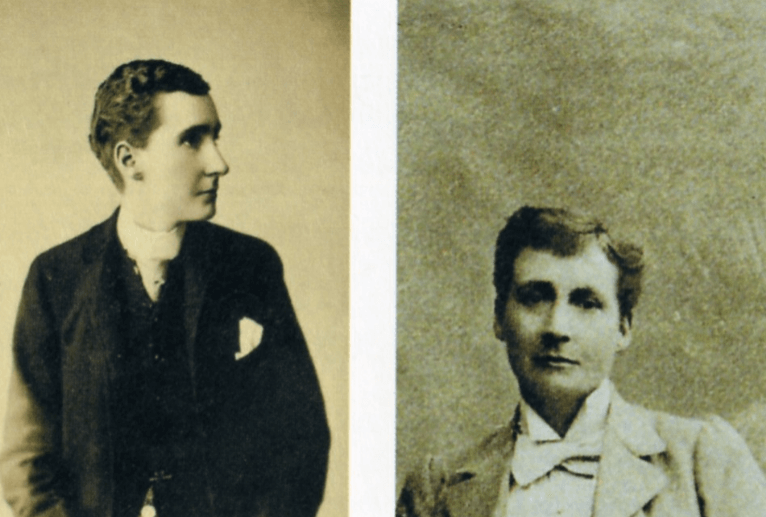
Mathilde de Morny was a trailblazer who stood up to a man-made system. A system that was not only set up as a tool of female oppression, but for the pleasure of men, to appeal to male-fantasy, to satisfy the male gaze. And although women in suits are some of the bravest warriors womanhood has to offer, apparently, nowadays, wearing that suit means you must’ve actually been a man.
There’s no honor in rewritting de Morny as a “man.” There’s no integrity in the cruel theft of what few pages lesbians have in the his-story books.
“Whatever a man can do, a woman can do too.” Missy de Morny was inspired to fight and defy sexist norms. She was female empowerment personified. Lesbians don’t fall in line. We never have. And we certainly don’t bow down to dick-tatorships. We fight. That’s our legacy.
To see these female figures unearthed, only to be buried under a false narrative, is heartbreaking.
Missy de Morny fought. That fight led to persecution, and ultimately her death. To see these female figures unearthed, only to be buried under a false narrative, is heartbreaking.
Mathilde de Morny was forgotten until her death in 1944. In May of 1944, she attempted hara-kiri, a form of Japanese ritual suicide that involves “cutting the belly,” but was prevented. The ritual is performed to restore honor when someone feels they’ve brought shame and dishonor. On June 29, 1944, no one was there to prevent Missy de Morny from committing suicide. The 80 year-old woman put her head in a gas oven, and took her last breaths.
جوليا ديانا — Julia Diana Robertson, is an award-winning author, and a contributor for Huffington Post and AfterEllen—A first generation Arab-American, who grew up between worlds, and currently resides somewhere in the middle with a bird’s eye view.
